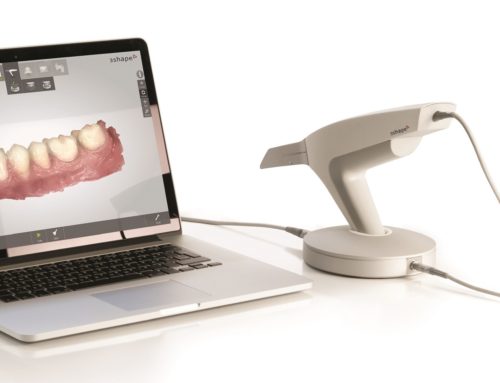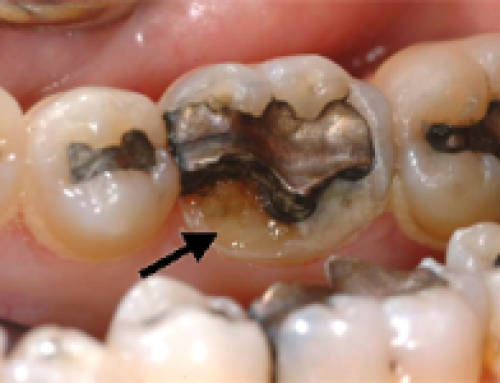Damaged Dentin Causes Indecent Exposure
Your teeth are made up of several layers. The incredibly hard, outer ‘enamel’ layer that allows you to bite and chew, the more porous ‘dentin’ layer that lies beneath the enamel and extends below the gumline, and the inner, soft tissue ‘pulp’ layer that contains all the nerves, blood vessels, and connective tissues to nourish the tooth.
Exposed Dentin near the gum line
If something happens to either of the outer protective layers, tiny tubules in the dentin layer allow underlying nerve endings to be exposed to air, hot, cold, and touch, resulting in a condition called ‘sensitive teeth’. For example, if your enamel is chipped, cracked, or broken as a result of age, injury, or grinding, the underlying dentin may be partially exposed. Clenching, grinding, improper brushing, and receding gums can also allow the dentin to be exposed.
Easy Does It
Once the dentin is exposed, there’s not much you can do to actually correct the situation. However, there are several ways to treat the symptoms themselves, easing sensitivity within a few weeks of treatment. First, we may suggest a soft-bristled toothbrush to protect your gums from further irritation and recession. Our office may also recommend a special toothpaste formulated to either block access to the nerve endings, or insulate the nerve itself. Finally, we may prescribe a fluoride rinse or gel for sensitive teeth. For a few weeks, as you wait for the special sensitivity toothpaste to take effect, it’s wise to pay extra attention to what you eat and drink– avoiding very hot or cold foods and beverages, stopping any habitual, conscious grinding or clenching, and brushing very gently with a soft brush. And, if you have ongoing and consistent problems with sensitivity, please be sure to mention it to us so that we can evaluate your situation and make appropriate recommendations or perform in-office techniques that may solve your problem.







Leave A Comment